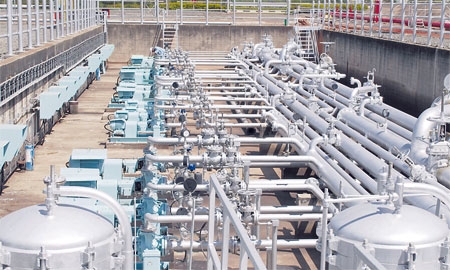Making their way across Kenya from Mombasa on the eastern coast through Nairobi in the centre and reaching all the way to neighbouring South Sudan, Uganda, the DRC, Rwanda, Burundi and Tanzania are a series of multi-product pipelines, built and operated by
Kenya Pipeline Company, or
KPC.
Originally established to transport refined petroleum products from Mombasa Port to the hinterlands, state-owned KPC first built a 280-mile, 14-inch pipeline between Kenya’s main port and Nairobi, which was completed in 1978. Growing demand called for a longer network and so the Western Kenya Pipeline Extension (WKPE) was commissioned in 1991 and finished three years later. This enhanced network was then able to serve not only the Kenyan market, but the Great Lakes region as well.
Refined petroleum products are a necessary instrument in Kenya’s – and the entire region’s – economic development and therefore KPC’s steps to keep up with rising demand are crucial. Managing director Selest Kilinda says, “The storage and pipeline transport facilities have a very important role to play in the economic and social development in the region. We are indeed one of the major infrastructures in the Kenyan Government’s Vision 2030 development blueprint. We will try to ensure that the facilities are available, efficient and reliable to meet the demand together with the development agenda of the country and the region.”
This demand, calculated regionally in excess of 6 to 7 per cent per year, has called for yet another pipeline. Due to be functional by June, a new 14-inch pipeline running from Nairobi to Eldoret will guarantee KPC meets demand up to 2020, doubling the installed flow rate of the WKPE and bringing it up to a total of 757 cubic metres per hour.
Recent large discoveries of oil in Uganda have altered plans to form a joint venture between the Ugandan and Kenyan Governments and a developer to construct another pipeline from Eldoret to Kampala, Uganda’s capital, and further onwards to Rwanda. As Uganda has decided to build its own refinery, the land-locked country will no longer require refined imports and – depending on the capacity – may even be in a position to reverse the flow and export to Kenya.
“At the moment, I think they are talking about throughput of 60,000 bpd [barrels per day] and that would probably be just enough for the Lake Region, including Uganda, DRC, Rwanda, Burundi and part of South Sudan,” comments Mr Kilinda. “However, if they develop a refinery for up to 100,000 bpd throughput, Kenya will definitely import from Uganda in line with the spirit of the East African Community.”
‘THE WESTERN KENYA PIPELINE ENHANCEMENT WILL BE OPERATIONAL BY MID-2011 WITH A FLOW RATE OF ABOUT 757 M3 PER HOUR’
SELEST KILINDA
Managing Director of KPC
|
Kenya’s own refinery has a capacity to refine just 1.6 million tonnes of crude per year, an amount not sufficient for the local market. Nevertheless, Mr Kilinda says plans to modernise it and raise its actual production to reach its full potential of four million tonnes per year are at an advanced stage.
Kenya and Uganda have similar soil and foreign companies have once again taken up exploration activities in the former. KPC will remain relevant no matter the results, as even if oil is discovered in Kenya, any new refineries will most likely be built in the east, meaning refined petroleum products will still need transporting westwards. Additionally, if Uganda does produce enough petroleum for export to Kenya, then KPC will simply “reverse the infrastructure and build a pipeline to pump back oil from Uganda to Kenya,” says the managing director.
Apart from transport, KPC also stores and distributes petroleum products. It has more than 40 licensed oil marketing companies as customers, up from just the initial five thanks to the Government’s liberalised oil marketing policies.
KPC has a total storage capacity of some 612,000 cubic metres, half of which are located at the Kipevu Oil Storage Facility in Mombasa.
For investors interested in developing oil and gas infrastructure in Kenya, Mr Kilinda advises partnering with KPC. “We have the only pipeline and if we wanted to develop new infrastructure we already have wayleaves,” he explains. “We still have a lot of room for developing and expanding our infrastructure, which can be used at very short notice. Developing infrastructure will take less time than it would to acquire new wayleaves, which is time-consuming and expensive. We welcome investors who want to partner with us; we have the know-how, the people and the information.”
KPC, financially reliant on its own resources complimented by commercially borrowed funds, achieved ISO 9001:2000 certification in July 2007, which it upgraded to ISO 9001:2008 in June of last year.

0 COMMENTS